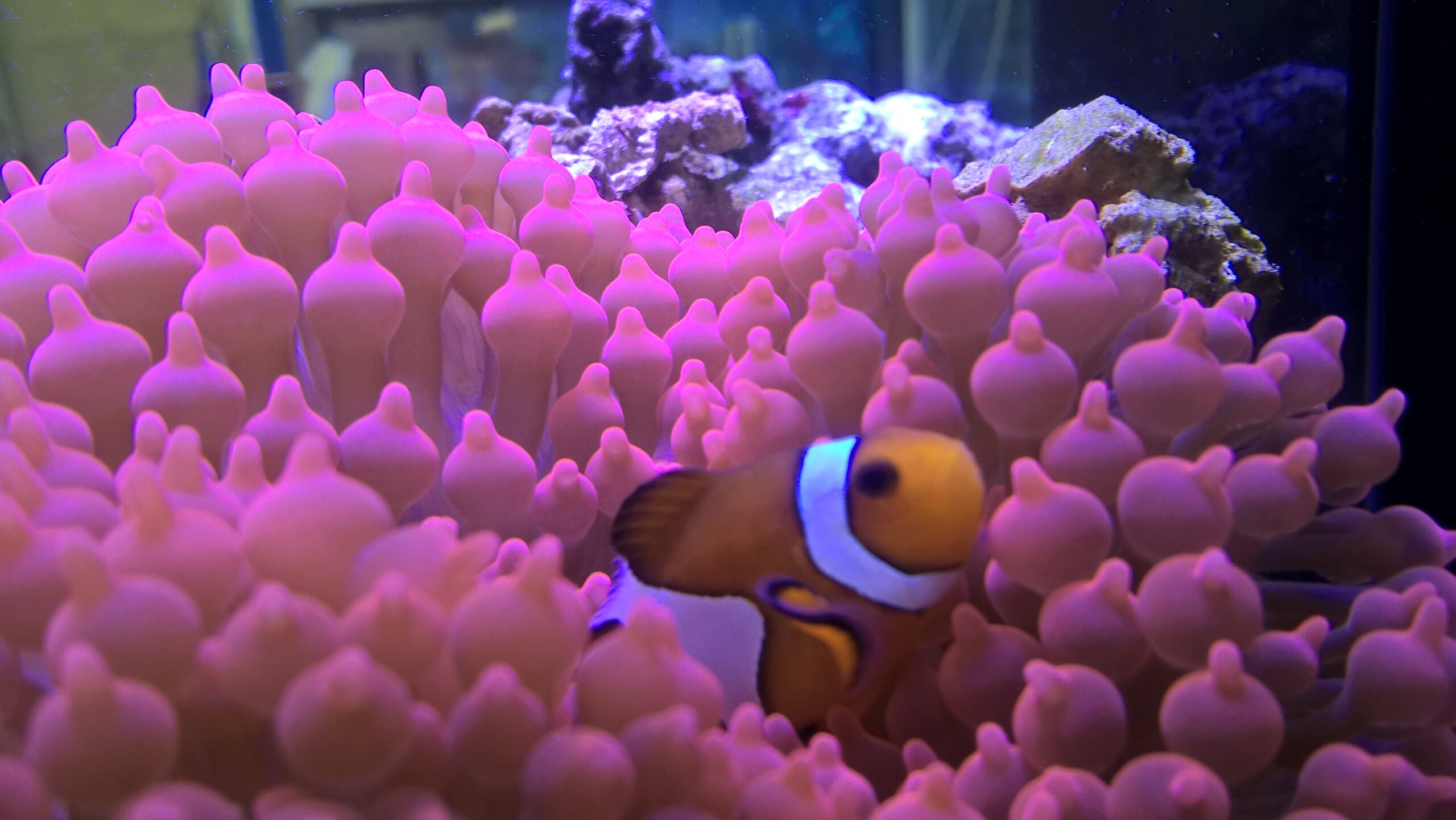Clownfish and anemone
One of the most spectacular examples of symbiosis or, more precisely, mutualism, is the relationship between clownfish and anemone. Fish living in symbiosis with anemones belong to the Pomacentridae family. The most popular are fish from the genera Amphiprion and Premnas. The most common combination in marine aquaria is the relationship between the anemone Entacmea quadricolor – commonly known as Bubble-tip anemone – and common clownfish – Amphiprion ocellaris. This relationship, as in mutualism, is based on benefits for both parties. I will try to explain what benefits the clownfish and anemone derive from this cooperation.
Anemone and zooxanthellae
Anemones are very interesting animals that live in symbiosis not only with clownfish, but also with single-celled algae called zooxanthellae that inhabit the cells of the anemone. Like all algae, zooxanthellae synthesize simple sugars with the help of light during photosynthesis. In well-lit waters photosynthesis is so efficient that these algae produce more sugars than they can consume for their needs. Therefore, excess sugars are transported to the cells of the anemone for which it will provide energy for life. Instead, the anemone provides a safe haven for zooxanthellae. Without it, they would be at the mercy of waves, currents, or a source of food for zooplankton.
An additional advantage for the zooxanthellae is that they have easy access to the metabolic products of the anemone, which are also food for them. This is important because the waters inhabited by corals including anemones belong to oligotrophic waters. Which means they have low levels of nutrients.
Protein for anemone
It has already been mentioned that anemones are provided with energy for life in the form of sugars synthesized by zooxanthellae. However, sugars only provide energy to ensure basic life processes. In order for anemones to grow and reproduce they need protein. And this is where anemone fish come to the rescue.
Clownfish hunt rather small crustaceans, although in defense of its own nest, which is an anemone, it can kill a snail, crustacean or even a larger fish. Often they instinctively hunt some animal, quickly bringing it in their mouth to the anemone and then they decide that the prey is too big and they abandon it. In this way, they contribute to feeding the anemone with the necessary protein. The anemone’s strongly stinging tentacles are a great danger to most fish, so most fish avoid anemones.
An anemone burn puts most fish into a state of numbness, which is immediately used by the anemone to consume the unwary fish and supplement their diet with protein. Clownfish, on the other hand, produce mucus that allows them to move safely among the anemone’s arms without risk of burning. Therefore, the anemone provides a safe home for them, the vicinity of which they are reluctant to leave.
Clownfish in their anemone are very territorial fish that do not need a large aquarium. They can be kept safely in aquariums of about 100 l or even smaller if the proper water parameters are maintained. Clownfish are not troublesome to maintain, they are one of the easiest marine fish to keep, tolerating many mistakes made by the beginners.
Witold Sosnowski










